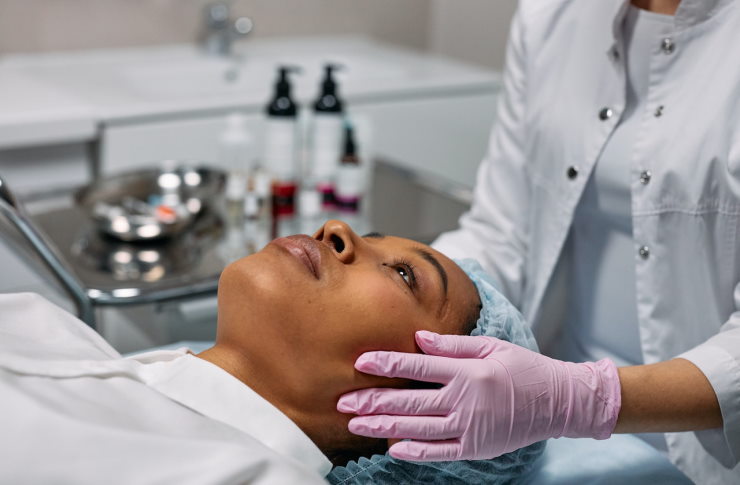General Insights into Laser Skin Treatments
Laser skin treatments are commonly used for cosmetic and skincare purposes. Learn about typical procedures, how they may be applied to the face, and what people often consider when exploring clinic options. This overview offers general information only.

What are the most common uses of laser skin treatments?
Laser skin treatments are versatile and can address a wide range of skin concerns. Some of the most common uses include:
-
Acne and acne scar reduction
-
Fine line and wrinkle treatment
-
Sun damage and age spot removal
-
Hair removal
-
Skin tightening and firming
-
Rosacea and redness reduction
-
Tattoo removal
-
Stretch mark minimization
These treatments work by delivering concentrated light energy to specific areas of the skin, stimulating collagen production, breaking down pigmentation, or targeting hair follicles, depending on the desired outcome.
How do laser treatments work on different skin types?
Laser treatments can be effective on various skin types, but it’s crucial to choose the right laser for your specific skin tone and condition. Different lasers are designed to target specific skin concerns and work best on certain skin types:
-
Ablative lasers: These remove the outer layer of skin and are best for significant skin resurfacing.
-
Non-ablative lasers: These penetrate deeper layers without damaging the surface, suitable for milder skin concerns.
-
Fractional lasers: These treat a fraction of the skin at a time, allowing for quicker healing.
-
IPL (Intense Pulsed Light): This targets pigmentation and is effective for lighter skin tones.
It’s essential to consult with a qualified dermatologist or aesthetician to determine the most appropriate laser treatment for your skin type and concerns.
What should you consider before getting a laser treatment?
Before undergoing a laser skin treatment, consider the following factors:
-
Your skin type and condition
-
The specific concerns you want to address
-
Your medical history and any current medications
-
The experience and qualifications of the practitioner
-
The type of laser being used and its suitability for your needs
-
Potential side effects and downtime
-
The number of sessions required for optimal results
-
Your budget and the overall cost of treatment
It’s crucial to have a thorough consultation with a skincare professional to discuss these factors and ensure that laser treatment is the right option for you.
What are the potential risks and side effects of laser treatments?
While laser skin treatments are generally safe when performed by qualified professionals, there are potential risks and side effects to be aware of:
-
Temporary redness and swelling
-
Mild discomfort during and after treatment
-
Changes in skin pigmentation (hyper- or hypopigmentation)
-
Scarring (rare, but possible)
-
Infection (uncommon with proper aftercare)
-
Burns or blistering (if the laser is not used correctly)
-
Eye injury (if proper eye protection is not used)
-
Reactivation of cold sores or herpes simplex virus
To minimize these risks, always choose a reputable provider and follow all pre- and post-treatment instructions carefully.
How long do laser treatment results typically last?
The longevity of laser treatment results can vary depending on the specific treatment, your skin type, and how well you maintain your skin afterward. Here are some general guidelines:
-
Hair removal: Results can last for months or years, with occasional touch-ups needed
-
Skin resurfacing: Effects can last several years with proper skincare
-
Pigmentation treatment: Results can be long-lasting with sun protection
-
Acne treatment: May require ongoing maintenance for best results
-
Skin tightening: Effects can last 1-3 years, depending on the individual
To prolong the results of your laser treatment, it’s essential to follow a good skincare routine, protect your skin from sun damage, and maintain a healthy lifestyle.
What factors influence the cost of laser skin treatments?
The cost of laser skin treatments can vary significantly based on several factors:
-
Type of laser treatment
-
Size of the treatment area
-
Number of sessions required
-
Geographic location
-
Provider’s expertise and reputation
-
Clinic’s facilities and equipment
To give you a general idea of pricing, here’s a comparison of some common laser treatments:
| Treatment Type | Average Cost per Session | Typical Number of Sessions |
|---|---|---|
| Laser Hair Removal | $200 - $800 | 6-8 |
| Fractional Laser Resurfacing | $1,000 - $2,500 | 3-5 |
| IPL Photofacial | $300 - $600 | 3-6 |
| Laser Tattoo Removal | $200 - $500 | 6-10 |
| Laser Acne Treatment | $200 - $400 | 3-5 |
Prices, rates, or cost estimates mentioned in this article are based on the latest available information but may change over time. Independent research is advised before making financial decisions.
In conclusion, laser skin treatments offer a wide range of benefits for various skin concerns. By understanding the different types of treatments available, considering important factors before proceeding, and being aware of potential risks and costs, you can make an informed decision about whether laser skin treatment is right for you. Always consult with a qualified professional to determine the best course of action for your unique skin needs.
This article is for informational purposes only and should not be considered medical advice. Please consult a qualified healthcare professional for personalized guidance and treatment.




